Disclosure: This article contains affiliate links. We may earn a commission from purchases at no extra cost to you, which helps our travel content.
Standing amid the windswept ruins of Leptis Magna, with my hand resting on sun-warmed marble that once supported one of Rome's greatest African cities, I couldn't help but feel like I'd stumbled onto a movie set. Except this wasn't Hollywood magic—this was real history, largely untouched and dramatically undervisited. After years of political instability kept Libya off most travelers' radar, this UNESCO World Heritage site is cautiously reopening to intrepid visitors. As someone who's tracked global startup ecosystems and traveled with my daughter to show her history beyond textbooks, I can tell you that Leptis Magna offers something truly rare: an intact ancient Roman city without the crowds of Ephesus or Pompeii. This spring, I spent a week exploring what many archaeologists consider the most impressive Roman ruins in the Mediterranean—a journey that required careful planning but delivered experiences that will stay with me forever.
The Historical Significance of Leptis Magna
Before we dive into logistics, let's understand what makes Leptis Magna so special. Founded by Phoenicians in the 7th century BCE and later absorbed into the Roman Republic, this coastal city reached its zenith under Emperor Septimius Severus—a local son who became Rome's first African emperor in 193 CE. He showered his hometown with architectural gifts, transforming it into one of the empire's most magnificent cities.
What strikes me most about Leptis is how complete it feels. Unlike many ancient sites that require imagination to fill in the gaps, here you'll find intact colonnaded streets, a massive forum, stunning baths, an amphitheater that once held 16,000 spectators, and a nearly perfect theater overlooking the Mediterranean. The city's harbor complex—with its massive breakwater, warehouses, and lighthouse—shows the engineering prowess that made Rome's commercial empire possible.
Walking through the Arch of Septimius Severus, I was struck by the quality of preservation. The reliefs depicting the emperor's family are so detailed you can make out facial expressions—a rare connection across millennia. When my feet touched the original Roman road, complete with chariot wheel ruts worn into the stone, I felt a visceral connection to everyday Romans who walked these same paths nearly 2,000 years ago.
The site's relative isolation during Libya's modern history ironically helped preserve it. While other Roman cities were cannibalized for building materials or overwhelmed by modern development, Leptis Magna slumbered under desert sands until archaeological excavations began in earnest during the early 20th century.
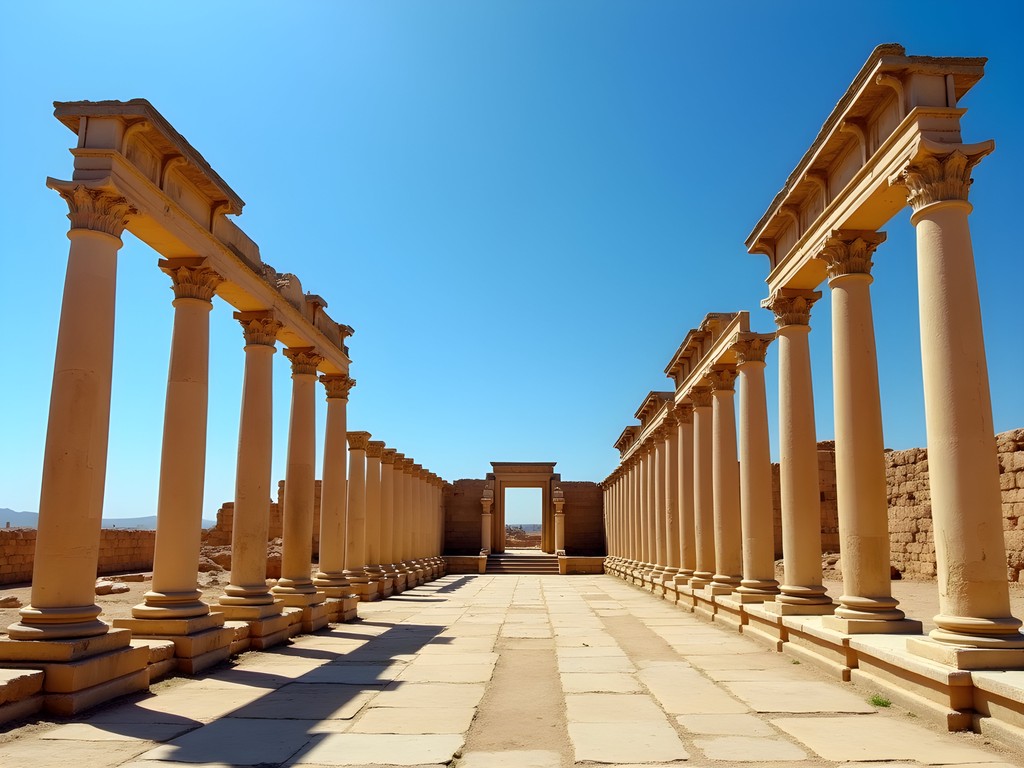
💡 Pro Tips
- Visit early morning to avoid both heat and crowds
- Hire a knowledgeable local guide for historical context
- The site is vast—prioritize the Theater, Severan Forum, and Hadrianic Baths
Planning Your Journey to Libya
Let's address the elephant in the room: Libya isn't your typical tourist destination. After years of political instability following the 2011 revolution, the country is gradually reopening to tourism, but this isn't a destination for novice travelers.
Visas require advance planning and patience. I applied through a specialized tour operator three months before my trip, providing extensive documentation including an invitation letter from a Libyan entity. The process has improved recently, but expect bureaucratic hurdles. Working with a reputable tour company is non-negotiable here—they'll handle permissions, transportation, and security considerations that remain important.
I've traveled to emerging markets across Africa while exploring startup ecosystems, but Libya presented unique challenges. Internet connectivity is spotty, so I came prepared with my satellite communicator which provided peace of mind for staying in touch with family back home. For research, I loaded my e-reader with books about Roman North Africa and Libya's complex history—essential context for appreciating what you'll see.
Flights to Libya typically route through Istanbul, Cairo, or Tunis. I flew Turkish Airlines to Tripoli's Mitiga International Airport, then arranged ground transportation to Al Khums (the modern city near Leptis Magna). While day trips from Tripoli are possible, I recommend staying closer to the site for at least two nights to fully appreciate the ruins without rushing.
The security situation continues to evolve, so stay informed through your country's travel advisories. During my visit, tourist areas felt secure with visible but unobtrusive security, though conditions can change rapidly. Travel insurance with comprehensive evacuation coverage isn't just recommended—it's essential.

💡 Pro Tips
- Book through a specialized Libya tour operator for visa assistance
- Bring sufficient cash (USD or EUR) as ATMs are unreliable
- Download offline maps and translation apps before arrival
Navigating the Archaeological Site
Leptis Magna sprawls across nearly 500 hectares—a vast archaeological playground that demands strategic exploration. I spent three full days on site and still didn't see everything. The good news? You'll likely have much of it to yourself, a stark contrast to crowded Mediterranean sites in Italy or Greece.
Start your visit at the small but informative museum near the entrance, where artifacts provide crucial context. The site itself has minimal signage, so come prepared with a good guidebook or, better yet, hire one of the knowledgeable local guides. My guide, Ahmed, a former archaeology student, transformed what could have been just 'impressive old stones' into vivid stories of daily life, political intrigue, and architectural innovation.
The logical route begins at the Old Forum, continues through the Theater and Chalcidicum, then follows the Cardo Maximus (main street) to the Hadrianic Baths and spectacular Severan Forum. The Hunting Baths, with their remarkably preserved frescoes, shouldn't be missed. Plan to spend at least 5-6 hours for even a cursory visit.
The Mediterranean climate means spring days can shift from pleasantly warm to scorching by midday. I started at 7 AM each morning to enjoy the magical light and cooler temperatures. My wide-brimmed hat was essential for sun protection, as shade is limited among the ruins.
Wear sturdy walking shoes—not sandals—as the terrain is uneven with loose stones and occasionally sharp marble fragments. The site is largely unsuitable for those with mobility challenges, though the main central areas are more accessible than outlying sections.
Photographers will want to bring multiple lenses. I found my wide-angle essential for capturing the grand scale of structures like the Severan Basilica, while a telephoto helped isolate architectural details like the acanthus leaves on Corinthian capitals or the intricate carvings on the Arch of Septimius Severus.
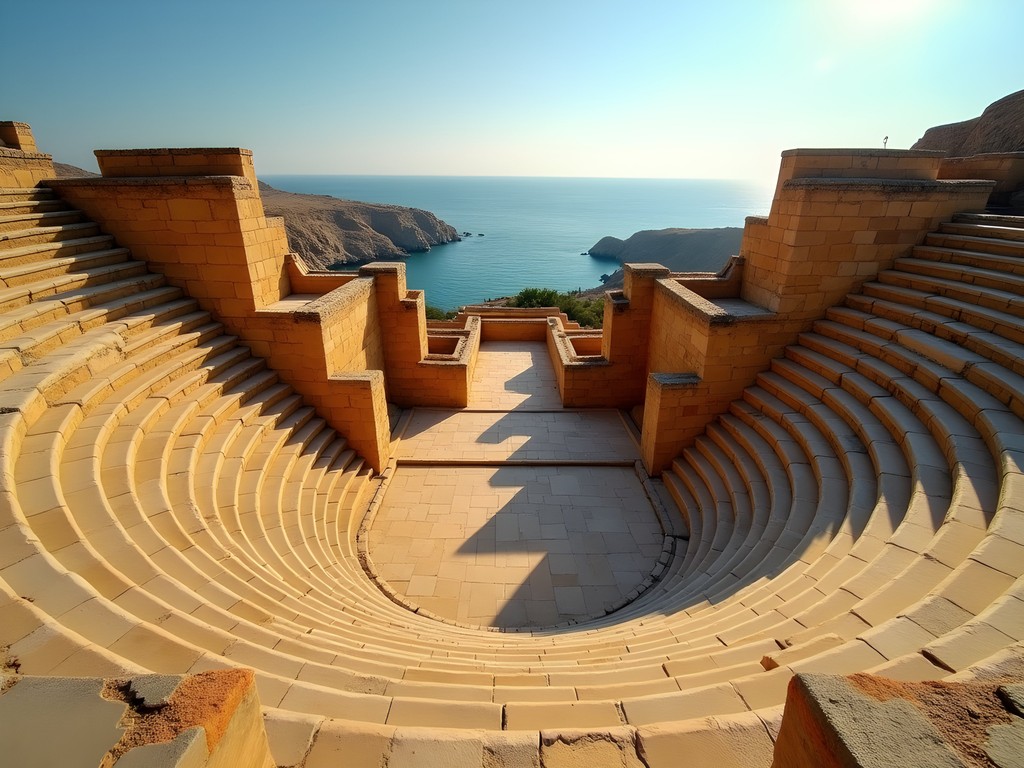
💡 Pro Tips
- Download a site map before visiting as there are few directional signs
- The site is vast—wear comfortable shoes and pace yourself
- Bring at least 2 liters of water per person, even in spring
Accommodation and Local Experiences
Accommodation options near Leptis Magna are limited but improving. In Al Khums, the closest town to the ruins (about 3km away), I stayed at the Leptis Magna Hotel—a modest but clean establishment catering primarily to business travelers and the occasional tourist group. Don't expect luxury, but my room was comfortable with reliable air conditioning and surprisingly decent WiFi. For those preferring more amenities, basing yourself in Tripoli (about 120km west) offers better options, though this means a long day trip to the ruins.
Meals near the site are simple affairs, with several small restaurants serving traditional Libyan cuisine. At Marsa Restaurant, just a kilometer from the site entrance, I enjoyed some of the best seafood of my journey—fresh catches from the Mediterranean prepared simply with local olive oil, lemon, and herbs. The owner, seeing my interest in local food, invited me into the kitchen to learn how they make bazeen, Libya's national dish of hard dough topped with meat and potato stew.
One unexpected highlight was connecting with a local tech entrepreneur in Al Khums who'd returned from studies abroad to launch a tourism app. Our conversation over mint tea about Libya's emerging startup scene reminded me that even in places known primarily for their ancient history, innovation continues. These human connections often become the memories that last longest.
While exploring the area surrounding Leptis, don't miss Villa Silin, a separate archaeological site 12km west featuring spectacular Roman mosaics. My guide arranged a visit to a local olive farm afterward, where I learned about traditional pressing methods that haven't changed much since Roman times.
For capturing these experiences, my travel camera proved perfect—powerful enough for high-quality photos yet discreet enough not to create discomfort in more conservative areas. Just remember to always ask permission before photographing locals.
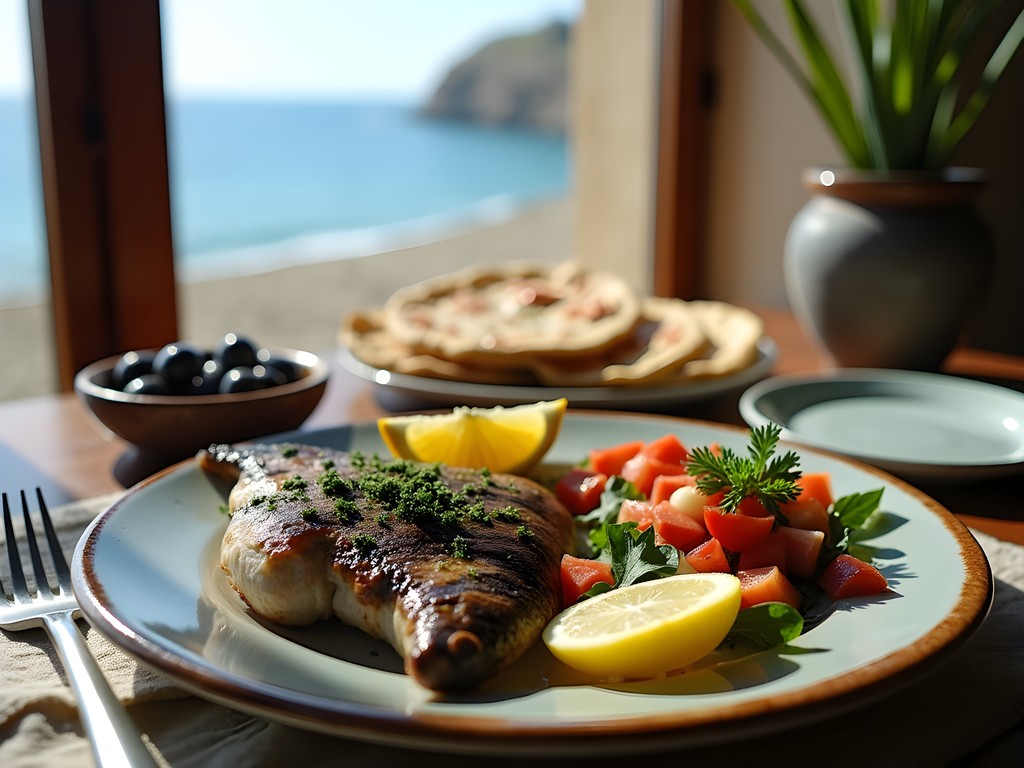
💡 Pro Tips
- Book accommodation well in advance as options are limited
- Learn a few Arabic phrases—locals appreciate the effort and will open up more
- Try the local seafood—the Mediterranean location means it's exceptionally fresh
Cultural Sensitivities and Etiquette
Traveling responsibly in Libya requires cultural awareness that goes beyond typical tourist considerations. Libya is a conservative Muslim country, and while attitudes in archaeological sites are relatively relaxed, respecting local customs ensures a more meaningful experience and helps pave the way for future visitors.
Dress modestly regardless of gender. For men like myself, this means long pants rather than shorts (even in warm weather) and shirts that cover the shoulders. Women should cover shoulders, knees, and chest, with loose-fitting clothing preferred. At archaeological sites, standards are somewhat relaxed for tourists, but when visiting nearby towns or interacting with locals, more conservative dress shows respect.
Ramadan observances affect daily rhythms if you visit during the holy month. During my trip, which coincidentally overlapped with Ramadan, I found site hours adjusted to accommodate fasting schedules, and many restaurants opened only after sunset. Rather than seeing this as an inconvenience, I embraced the opportunity to experience iftar (breaking of the fast) with my guide's family—a memorable cultural exchange.
Photography requires thoughtfulness. While ancient ruins are generally fine to photograph, military installations, government buildings, and infrastructure like bridges or ports are strictly off-limits. Always ask permission before photographing people, especially women and children. When invited into homes or shops, wait for an explicit invitation before taking photos.
Alcohol is largely unavailable and illegal in most contexts. As someone who enjoys an occasional glass of wine with dinner when traveling, I adjusted my expectations and discovered Libya's wonderful tradition of mint tea and fresh juices instead.
Political discussions require sensitivity. Libya's recent history includes revolution, civil conflict, and ongoing political transitions. Locals may have strong and divergent views, and what seems like casual conversation to you might touch on deeply personal experiences for them. Listen more than you speak, avoid making judgments, and never press for opinions if someone seems hesitant to engage.
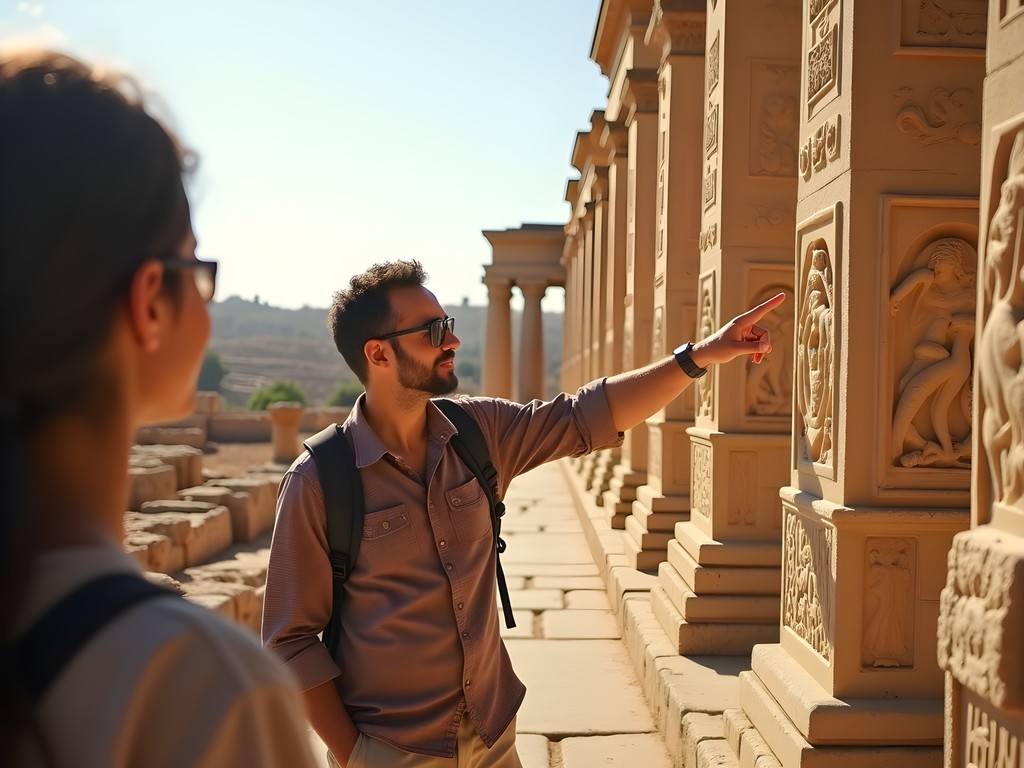
💡 Pro Tips
- Learn basic Arabic greetings—they go a long way in building rapport
- Avoid political discussions unless initiated by locals
- Women travelers should consider bringing a light scarf for visiting more conservative areas
Final Thoughts
As I watched the sunset cast long shadows across Leptis Magna's marble columns on my final evening, I couldn't help but reflect on how this remarkable place embodies resilience. Through centuries of conquest, natural disasters, and political upheaval, these stones have endured—and now cautiously welcome visitors again. Libya isn't an easy destination, but for those willing to navigate the complexities, Leptis Magna offers a profound connection to our shared human history without the barriers and crowds that often separate us from truly experiencing ancient sites. If you're an experienced traveler seeking destinations that combine historical significance with genuine adventure, consider adding this Mediterranean marvel to your list. Just come prepared, tread respectfully, and allow yourself to be humbled by what our ancestors created nearly two millennia ago. The world has many Roman ruins, but there's only one Leptis Magna.
✨ Key Takeaways
- Leptis Magna offers exceptionally well-preserved Roman ruins without the crowds of more famous sites
- Travel to Libya requires advance planning and working with specialized tour operators
- Spring provides ideal weather for exploring the extensive archaeological site
- Cultural sensitivity and flexibility enhance the experience in this emerging destination
📋 Practical Information
Best Time to Visit
March to May (spring) or October to November (fall)
Budget Estimate
$150-250/day including guided tours, accommodation, and meals
Recommended Duration
Minimum 3 days for Leptis Magna, 7 days to include Tripoli and other sites
Difficulty Level
Challenging
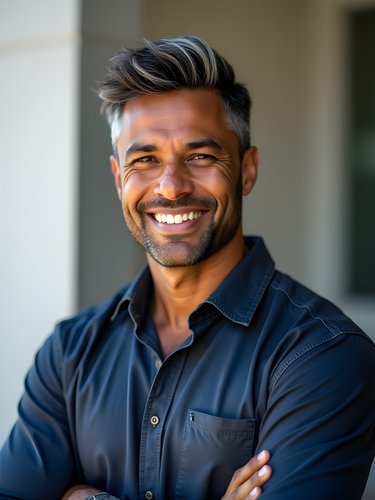
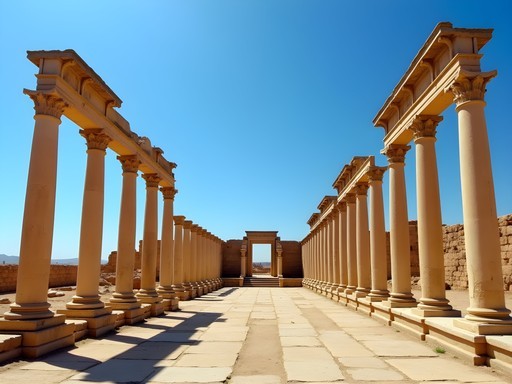














Comments
oceanguy
Just got back from Libya last week and Leptis Magna was the highlight! The marble streets are incredible - you can still see the chariot wheel ruts. We had the whole place almost to ourselves on a Tuesday morning. Definitely bring good walking shoes though, I underestimated how massive the site is!
adventureblogger
How many days would you recommend for the site?
oceanguy
We did one full day (8 hours) and felt rushed. If you're into photography or history, I'd say 1.5-2 days is ideal.
Robert Moreau
Riley, your post captures the magic of Leptis Magna beautifully. I visited during a Mediterranean cruise last year (we had special arrangements for the Libya stop), and walking through the Hadrianic Baths was like stepping through a time portal. What struck me most was how intact the city layout remains - you can really visualize daily Roman life there in a way that's difficult at more fragmented sites. My favorite moment was sitting alone in the theater at dusk, imagining the performances that once took place there. For anyone visiting, the mosaics in the Hunting Baths are easy to miss but absolutely worth seeking out. The craftsmanship is extraordinary.
adventureblogger
Any photography tips for Leptis Magna? Best time of day for shots? Planning to bring my DSLR and drone (if allowed).
Riley Griffin
Golden hour is magical there! Early morning (7-9am) had the best light and fewer visitors. Drones require special permission and paperwork - I'd recommend arranging this well in advance through your tour operator.
Nicole Russell
I visited Leptis Magna last year and it was absolutely incredible! The site is so much more extensive than I expected. Riley, your description of the Severan Basilica brought back memories - that forest of columns is truly awe-inspiring. For anyone planning to visit, I recommend bringing a good hat and lots of water. The site has very little shade and I spent about 5 hours exploring. Also, hiring a knowledgeable guide made a huge difference in understanding the historical context. I used my travel guidebook to prepare, which had excellent maps of the site.
springwanderer
Thanks for the tips Nicole! Did you stay nearby or make a day trip from Tripoli?
Nicole Russell
I stayed in Al Khums for one night to catch the sunset and sunrise at the ruins. Basic accommodations but worth it to have more time at the site!
oceangal
How did you get from Tripoli to Leptis Magna? Is there public transportation or did you need to hire a driver?
Riley Griffin
I arranged transportation through my tour company, which I'd recommend for safety and convenience. There are shared taxis that locals use, but navigating them requires Arabic language skills and local knowledge of the current situation. The drive takes about 2 hours each way from Tripoli.
oceangal
Thanks for the info! Definitely going to look into a tour company then. Can't wait to see those ruins in person!
beachguy
Just booked my trip for next spring after reading this! Any recommendations on which part of the site to visit first? I'll only have one full day there unfortunately.
Riley Griffin
With just one day, I'd prioritize the Severan Basilica, the Arch of Septimius Severus, and the theater complex in the morning when the light is best for photos. The harbor area is great for late afternoon when the sun starts to set. Bring plenty of water - it gets hot even in spring!
springwanderer
WOW! Those photos of the amphitheater took my breath away! Leptis Magna has been on my bucket list for years. Did you get to see the Arch of Septimius Severus up close?
smartguy
Great post! How difficult was it to get a visa for Libya these days? I've heard mixed things about tourist access.
Riley Griffin
Thanks! The visa process is still complicated but improving. I worked with a local tour company that handled most of the paperwork. You'll need a letter of invitation and patience - it took about 6 weeks for approval.
smartguy
That's helpful, thanks! Did you feel safe while traveling there?
Riley Griffin
Yes, I felt safe in the tourist areas and with guides. Just stick to recommended regions and follow local advice. The archaeological sites are well-protected.
Savannah Walker
I visited Leptis Magna last year and it still haunts my dreams! The scale of the place is impossible to capture in photos. Riley, your description of the Severan Basilica brought back so many memories. One tip for anyone planning to visit - bring plenty of water and wear proper shoes with ankle support. I spent nearly 6 hours exploring and the terrain is uneven throughout. The local guide I hired knew exactly when to visit certain sections to avoid the harsh midday sun. I found my wide angle lens absolutely essential for capturing the grandeur of the theater and forum. Did you make it to Sabratha as well during your trip?
Riley Griffin
Thanks Savannah! Great tip about the shoes - those ancient stones can be treacherous. I did make it to Sabratha! Not as extensive as Leptis Magna but that oceanfront theater was spectacular. Did you try the seafood restaurant in the nearby village? That grilled fish was one of my trip highlights!
greengal
Those sunset photos are absolutely stunning! The light on the columns looks magical.
Venture X
Premium card with 2X miles, $300 travel credit, Priority Pass